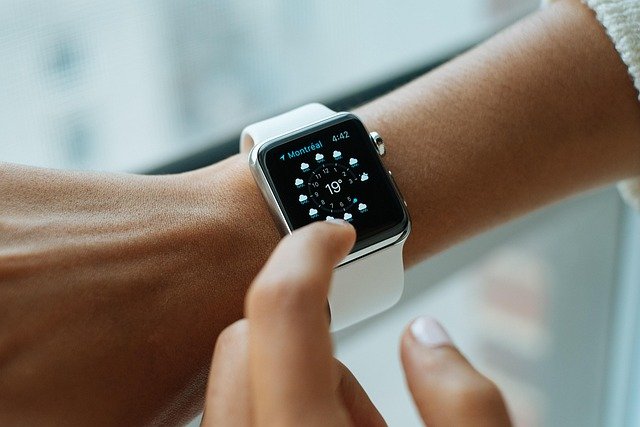Smartwatches for Women: Style Meets Modern Tech
Discover how smartwatches are transforming women’s wardrobes and wellness routines. From elegant designs and interchangeable bands to advanced health tracking and productivity tools, learn which features matter, how wearables support fitness and well-being, and which models stand out in 2025.

Smartwatches have evolved into versatile accessories that blend fashion and function for women. No longer limited to bulky, tech-first designs, today’s wearables offer refined aesthetics, robust health tracking, and productivity tools that fit into both casual and professional wardrobes. This guide explores stylish options, health and fitness capabilities, must-have features, workplace integration, and top models to consider.
Fashion-forward smartwatch options for women
The design language of smartwatches has shifted dramatically. Manufacturers and fashion houses now prioritize slim profiles, premium materials, and interchangeable components that let women tailor a device to their personal style. You’ll find watches with polished stainless steel or rose-gold finishes, petite cases designed for smaller wrists, and a wide selection of bands—leather, metal mesh, silicone, and woven nylon—that are simple to swap.
Customizable watch faces add another layer of personalization: choose minimalist dials for a classic look, bold digital layouts for a sporty vibe, or animated faces that match your mood. Collaborations between tech brands and fashion labels have further expanded options, producing limited-edition designs and upscale straps that make a smartwatch feel like jewelry as much as a gadget.
How smartwatches support women’s health and fitness goals
One of the biggest draws for women is the wide range of health monitoring features smartwatches provide. Modern models include heart rate monitoring, sleep analysis, step and calorie tracking, and dedicated workout modes for running, cycling, yoga, and more. Advanced sensors and algorithms can detect irregular heart rhythms, estimate VO2 max, and measure stress via electrodermal activity on certain devices.
Several wearables offer women-specific tools such as menstrual cycle tracking and fertility windows, enabling users to log symptoms, predict cycles, and receive insights tailored to reproductive health. Sleep tracking helps identify patterns and recovery needs, while continuous activity tracking keeps daily movement goals realistic and measurable. By delivering timely data and trends, smartwatches empower women to make informed choices about exercise, rest, and overall wellness.
This article is for informational purposes only and should not be considered medical advice. Please consult a qualified healthcare professional for personalized guidance and treatment.
Key features to prioritize when choosing a smartwatch
Selecting the right smartwatch depends on lifestyle and priorities. Here are essential features to evaluate:
- Compatibility with your smartphone ecosystem to ensure smooth syncing and app support.
- Battery life — consider whether you need multi-day endurance or daily charging is acceptable.
- Water resistance for swimming or showering without removing the watch.
- Comprehensive fitness and activity tracking, including heart rate and workout modes.
- Customizable watch faces and interchangeable bands to match outfits and occasions.
- Real-time smartphone notifications to stay connected without constant phone checking.
- Voice assistant integration for hands-free commands and quick replies.
- Built-in GPS for accurate outdoor activity tracking and route mapping.
- Mobile payments (NFC) for contactless purchases straight from the wrist.
- On-device music storage and playback for workouts without carrying a phone.
Weigh these features based on daily routines—prioritize battery life and GPS for frequent runners, or choose refined materials and smaller case sizes if style is paramount.
Smartwatches in professional life
In the workplace, smartwatches can be discreet productivity tools. They deliver calendar alerts, email previews, and meeting reminders without the distraction of pulling out a phone. Voice-to-text and quick-reply templates let users respond succinctly during meetings, and the ability to answer or make calls from the wrist can be a convenience in fast-paced situations.
For professions where appearances matter, a smartwatch that resembles a traditional timepiece or can be dressed up with a leather or metal band helps maintain a professional look while keeping connectivity close at hand. Security-minded users should enable passcodes and remote-wipe features to protect sensitive data.
| Product Name | Key Features | Price Range |
|---|---|---|
| Apple Watch Series 7 | Large always-on display, ECG app, Fall detection | $399 - $799 |
| Samsung Galaxy Watch 4 | Body composition analysis, Sleep tracking, ECG monitoring | $249 - $399 |
| Fitbit Sense | EDA Scan app for stress management, ECG app, 6+ day battery life | $299 - $329 |
| Garmin Venu 2S | Compact design, Advanced sleep tracking, Body Battery energy monitoring | $399 - $449 |
| Fossil Gen 6 | Customizable watch faces, Google Pay, Fast charging | $299 - $319 |
Prices, rates, or cost estimates mentioned in this article are based on the latest available information but may change over time. Independent research is advised before making financial decisions.
Choosing the right model for you
Match a watch to how you live: if fitness tracking is a priority, look for accurate sensors, detailed workout metrics, and long battery life. If style is your primary concern, prioritize craftsmanship, smaller case sizes, and the availability of premium bands. For a balanced mix, opt for devices that offer both sophisticated aesthetics and robust health features.
Try devices on where possible to judge comfort and readability. Consider software ecosystems too—some apps and features work best within specific phone platforms, and accessory selection can vary across brands.
The future of women’s smartwatches
Expect continued convergence of fashion and tech: thinner cases, longer battery life, improved biometric accuracy, and deeper integration with health services. Designers and engineers are increasingly focused on inclusivity—smaller sizes, diverse strap options, and features that reflect female health needs will likely grow in prominence.
Smartwatches have already redefined how women manage daily tasks, wellness, and personal style. As hardware and software evolve, these devices will become even more seamlessly integrated into everyday life, offering greater personalization, smarter health insights, and elegant designs that suit any wardrobe.





